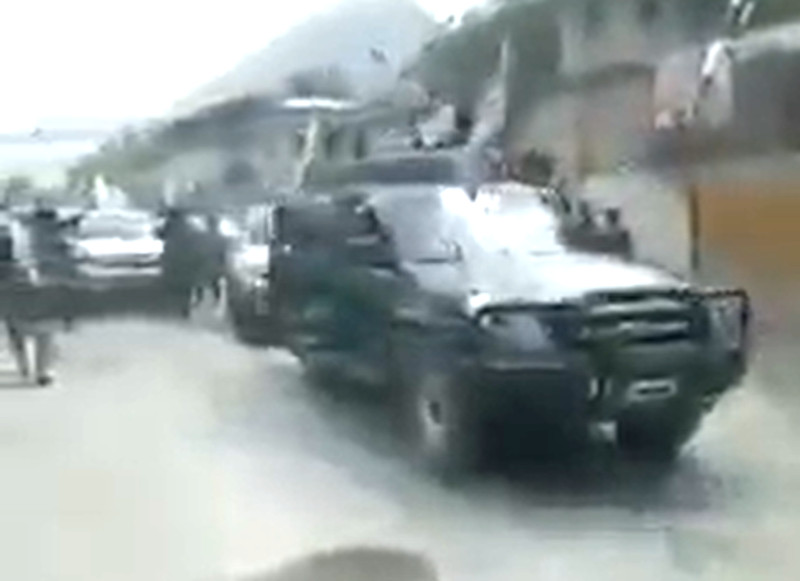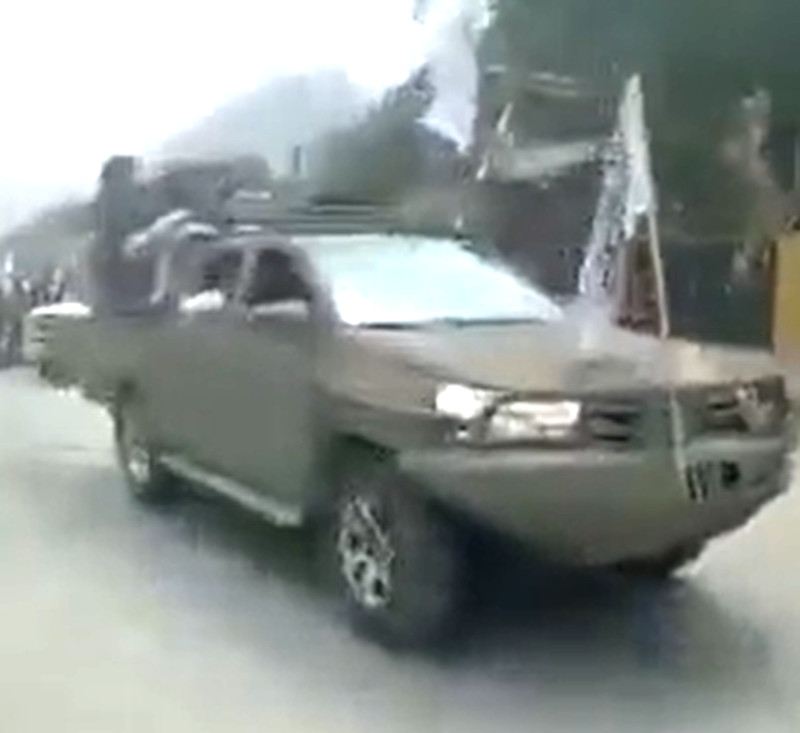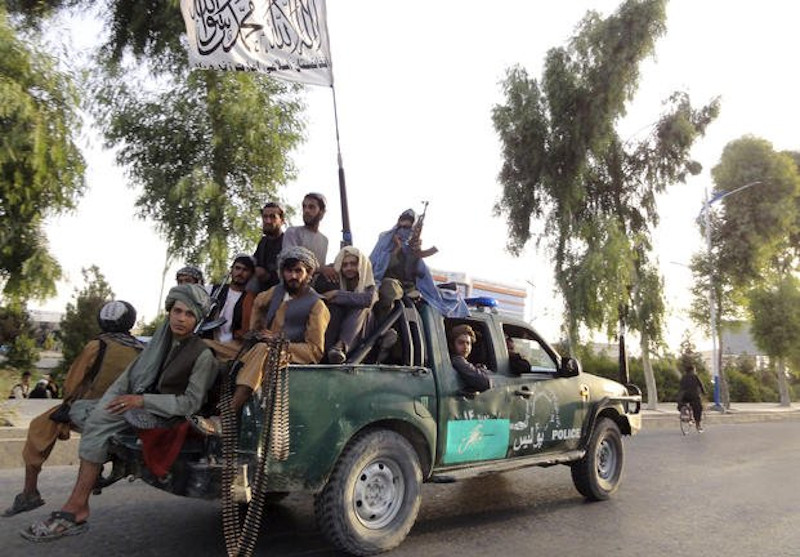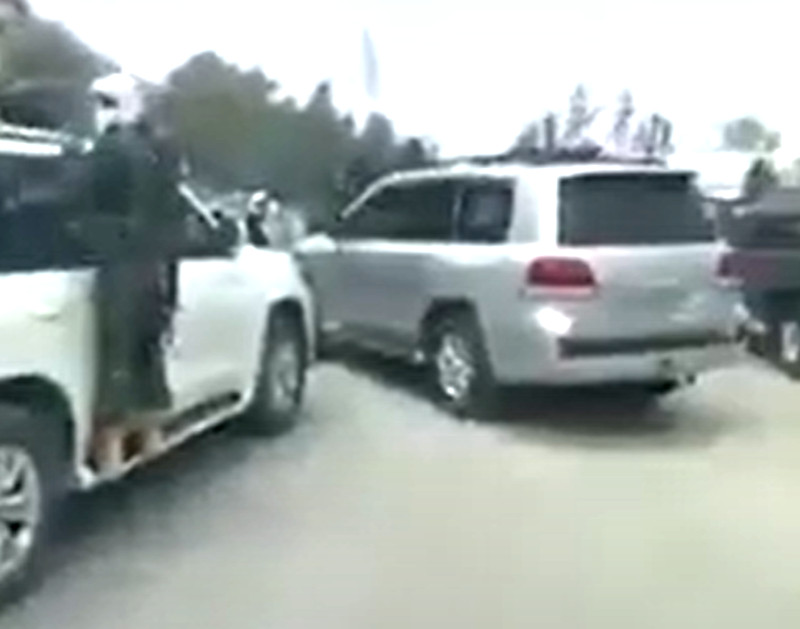A video has emerged online today that reportedly shows Dr. Amin Al Haq, who served for a time as the personal security chief for Al Qaeda founder Osama Bin Laden, traveling in the open in Afghanistan for the first time in a decade with a Taliban escort. If the description of this video is accurate, it can only raise questions about the current relationship between the Taliban and Al Qaeda and whether the former group will again give the latter safe haven in the country.
At the same time, a controversial American drone strike in Kabul yesterday, which, regardless of its intended targets, increasingly appears to have killed a number of innocent civilians, highlights the potential limits of future "over-the-horizon" counter-terrorism capabilities that will be available to the U.S. government going forward. All of this comes on the eve of the final withdrawal of U.S. forces from Afghanistan and the end of what American officials now say is set to be the largest evacuation airlift operation in U.S. military history.
It's unclear when it was shot, but the video was reportedly taken at a checkpoint in Nangarhar Province, which is where Al Haq was born. He is believed to have fled Al Qaeda's cave complex in Tora Bora into Pakistan with other senior members of the terrorist group, including Bin Laden himself, sometime between 2001 and 2002.
Al Haq was arrested in the Pakistani city of Lahore in 2008, but was released in 2011 under murky circumstances, and subsequently disappeared from the public eye. It's unclear whether this is actually his first trip back to Afghanistan since then, but it certainly looks to be the first time that he has been spotted out in public, which is notable in its own right.
Al Haq's current connections to Al Qaeda are uncertain, but the video makes it clear that that the Taliban are treating him as a very important individual. The footage shows him riding in what appears to be a discreetly armored SUV as part of a larger convoy.
At least two other pickup trucks are seen flying the Taliban's white flag with the Shahada, a profession of faith that is one of the Five Pillars of Islam, written on it in Arabic. One of these trucks is a Ford Ranger in the configuration that had been used by the now-defunct Afghan National Police. Though the Taliban had captured various vehicles from Afghan government security forces over the years, the group seized substantial additional numbers of them in the past month as its members made lightning-quick advances across the country. This haul included a number of these Ford Rangers, which are now commonly seen under Taliban control patrolling various cities across Afghanistan, including the country's capital.



Interestingly, there is also another SUV in the convoy that appears to have an array of antennas on top, which could either point to an onboard communications suite or an electronic warfare system designed to jam signals used to remotely detonate improvised explosive devices. The Taliban are in open conflict with ISIS' franchise in Afghanistan, also referred to as ISIS-Khorasan Province or ISIS-K, and the latter group is also known to have a significant presence in Nangarhar.

Though Al Haq's current affiliation is unknown, his re-emergence under Taliban protection can only raise questions about the group's continued insistence in public that it will not harbor Al Qaeda under its new regime. The Taliban is actively courting international recognition as the leaders of Afghanistan's new, legitimate government, but they are also already re-instituting a host of hardline policies, including banning music. There are credible reports that it is actively hunting down and executing former Afghan government officials and security forces personnel, among others, as well.
All of this is also only likely to fuel further criticism of how President Joe Biden's administration has downplayed the threat of a potential Al Qaeda resurgence in Afghanistan. Biden himself falsely said that the terrorist group was "gone" from the country on Aug. 20. Other U.S. officials have since made clear that the U.S. government's official position is that Al Qaeda continues to have a presence in Afghanistan and remains a threat.
All of this, in turn, is likely to add to the complications that the U.S. government, as well as the international community, as a whole, face in engaging with any Taliban-led government in Afghanistan going forward. There are unconfirmed reports that the United States, among others, could be entertaining the idea of working to some degree with the Taliban against ISIS-K. The U.S. military has publicly acknowledged taking actions in the past that were deliberately intended to aid Taliban forces fighting against Afghanistan's branch of ISIS.
Like Al Qaeda, ISIS-K remains a clear threat, with the group claiming responsibility for a rocket attack on Hamid Karzai International airport in Kabul just today amid the final stages of the U.S. military's evacuation operations and final withdrawal from the country. None of the rockets caused any disruptions to American operations, according to the Pentagon.
The U.S. military also confirmed today that a counter-rockets, artillery, and mortars (C-RAM) defense system knocked down one of those rockets, while the others hit areas inside the airport and nearby. The C-RAM system in question was very likely a Centurion, which you can read about in more detail here.
Separately, there are also calls for the United States to support a burgeoning anti-Taliban resistance in the Panjshir Valley, which is situated less than 100 miles north of Kabul. This movement is led by former First Vice President of Afghanistan Amrullah Saleh and Ahmad Massoud. Saleh was a commander in the Northern Alliance, which fought against the Taliban in the 1990s and early 2000s, and Massoud is the son of another legendary North Alliance leader, Ahmad Shah Massoud. The elder Massoud was infamously assassinated in a suicide bombing by individuals associated with the Taliban and Al Qaeda on Sept. 9, 2001, two days before the infamous 9/11 terrorist attacks in the United States.
It's important to remember that one of the key reasons for the U.S. intervention in Afghanistan, in the first place, was to ensure that the country could not be used as a base for Al Qaeda and other terrorist groups. The Biden administration has repeatedly insisted that it will retain "over-the-horizon" counter-terrorism capabilities, which is broad terminology meant to reflect aircraft and other forces based outside of Afghanistan, and this will be an adequate alternative to an indefinite military presence in the country.
However, a U.S. drone strike yesterday, the target of which American officials continue to say was a vehicle carrying multiple ISIS-K suicide bombers in Kabul, certainly underscores the potential limitations of any such operations going forward. The U.S. military is now investigating that strike after multiple reports have indicated that, whatever the actual nature of the target turns out to be, at least 10 incident civilians died as a result.
Targeting specific terrorists, and mitigating collateral damage in the process, can already be a complex proposition in environments where the United States enjoys the benefit of things like persistent aerial surveillance overhead, intelligence networks on the ground, and support from even a nominally friendly host government. "Over-the-horizon" operations in a non-permissive environment where firm intelligence is harder to come by could only make all of this more complicated.
All told, it very much remains to be seen exactly how the United States will continue to be engaged in Afghanistan, including militarily, after the imminent withdrawal of the last American troops after nearly two decades of operations in the country.
Contact the author: joe@thedrive.com
